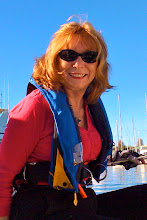When a baby is born it is essentially unattached emotionally despite the physical dependency that is all encompassing. The attachment begins as the baby's needs are provided for (warmth and food) in a nurturing environment. Early studies by Harlow on monkeys demonstrated the need for the nurturance beyond physical needs. He put baby monkeys in cages. Each had both a wire monkey-mother that dispensed milk and a cloth monkey-mother that did not. Both were on a heated pad. The babies were fed by the wire monkey, were free to roam around the cage and choose where to be. They spent increasing amount of time with cloth mother although she provided no milk. In another experiment, some baby monkeys were put in cages with only wire monkey who dispensed food and were heated, while others were put in cages with cloth mothers who dispensed the same food and were also heated. The babies in the cage with the cloth mothers thrived; those with the wire mother did poorly.
Ample evidence also exists for children raised in orphanages that provide only physical care without affection. These children are under-developed in every measurement and some do not survive. This is called failure-to-thrive and represents the critical importance of love and nurturance.
Of course, attachment is so much more than simply thriving physically. It is building a bond with a person that assists the child in its ability to build bonds in the future. For more on attachment, Dr. Bruce Perry has a website that describes how babies grow with attachment and how teachers can develop attachment with their students that aid in learning. For information on attachment go to: http://teacher.scholastic.com/professional/bruceperry/attachment.htm
For a subscription service that facilitates family members to form attachment with a baby in a distant location, see www.toyconnex.com.
Saturday, October 4, 2008
Sunday, September 28, 2008
Teaching a young child about his body
Who isn't fascinated by the body?
One kindergarten teacher in Raymore, MO introduced her students to the brain. She told each to take a really large page of a newspaper and crinkle it up into a ball. Each tiny pair of hands made these big paper balls and giggled as they squeezed them tight. Then the teacher told them that was about the size of their brains. The children were then instructed to open up the paper and try to smooth it out. Of course, that is not possible as the lines from the folds remain. The teacher told her students that is how big their brains were and everything they put into their brains is like the folds - it cannot escape. So if they have big brains and nothing ever escapes, think how smart they will become!
Another way to help a young child understand how the muscles move is for the child to trace an outline of themselves on paper or in chalk on a driveway. The child then uses string or yarn to trace how many nerves might be needed for the brain to make the body work.
Yet another way to teach the basic parts of a child's anatomy is take washable markers and draw the different parts on the child... this is where your lungs (draw 2 lungs in pink on the child's chest) and here is your heart (have him put his fist to his chest to obtain the right size and use the red marker to show it). Continue to draw the parts of the body the child is ready to learn. The lesson is also fun because you are bound to hit some tickle spots along the way
One kindergarten teacher in Raymore, MO introduced her students to the brain. She told each to take a really large page of a newspaper and crinkle it up into a ball. Each tiny pair of hands made these big paper balls and giggled as they squeezed them tight. Then the teacher told them that was about the size of their brains. The children were then instructed to open up the paper and try to smooth it out. Of course, that is not possible as the lines from the folds remain. The teacher told her students that is how big their brains were and everything they put into their brains is like the folds - it cannot escape. So if they have big brains and nothing ever escapes, think how smart they will become!
Another way to help a young child understand how the muscles move is for the child to trace an outline of themselves on paper or in chalk on a driveway. The child then uses string or yarn to trace how many nerves might be needed for the brain to make the body work.
Yet another way to teach the basic parts of a child's anatomy is take washable markers and draw the different parts on the child... this is where your lungs (draw 2 lungs in pink on the child's chest) and here is your heart (have him put his fist to his chest to obtain the right size and use the red marker to show it). Continue to draw the parts of the body the child is ready to learn. The lesson is also fun because you are bound to hit some tickle spots along the way
Subscribe to:
Comments (Atom)

